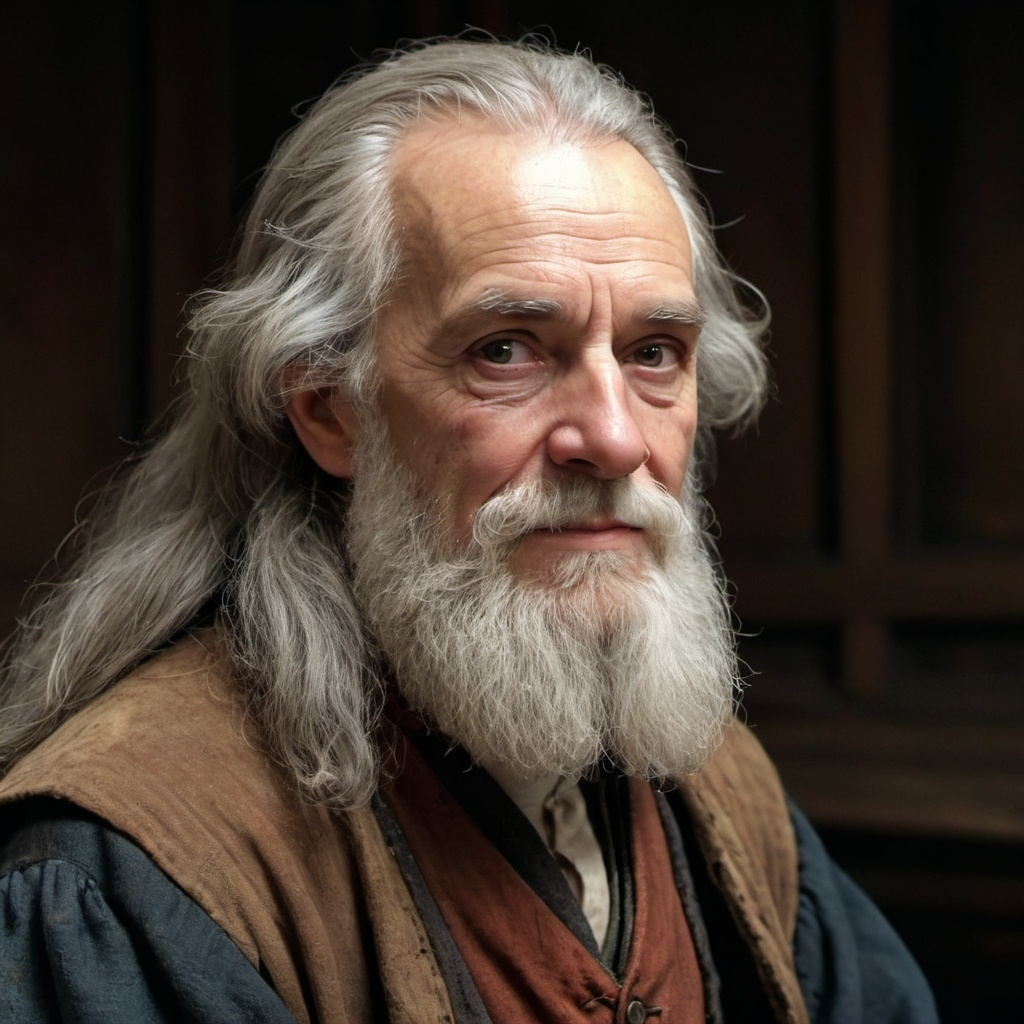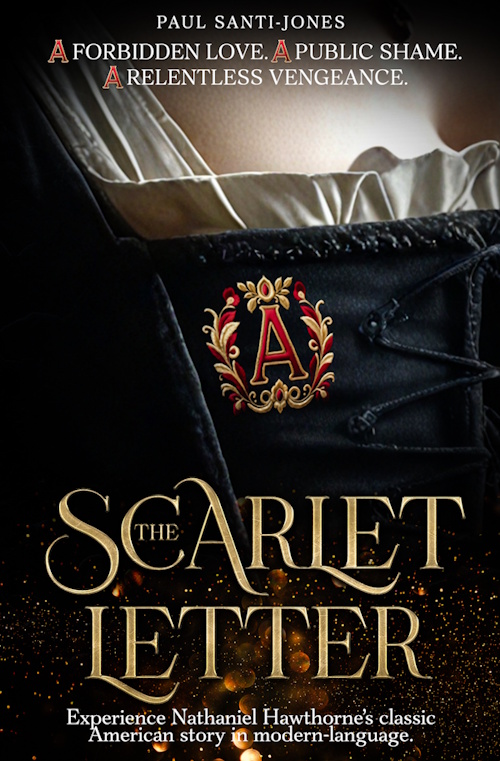Roger Chillingworth: A Scarlet Letter Character Profile

Meet Roger Chillingworth: The Scholar's Revenge
Welcome back, Scarlet Letter explorers! Today, we look into one of the darkest and most mysterious characters in the story: Roger Chillingworth. He arrives in Boston a learned scholar, but a hidden quest for revenge twists him into something much more sinister. What drives him? Let's find out.
Roger's a bit of a mystery man, isn't he? He appears quietly, this older, knowledgeable guy, and you immediately sense he has a hidden agenda. Especially with his keen interest in Hester on the scaffold. What really got me thinking was why he becomes so obsessed with getting revenge on Arthur. The book tells us he's Hester's husband, but it never fully explains the depth of his need to destroy Arthur. I sometimes wonder if he was transferring blame. Maybe, deep down, he felt partly responsible for the whole situation. After all, he had sent Hester ahead to America alone while he stayed in Europe for a long time. Could his intense focus on punishing Arthur have been a way to avoid his own feelings of guilt or failure in their marriage? It's like he couldn't face his own part in it, so he poured all that negative energy into tormenting Arthur instead. It makes him a more complicated character than just a simple bad guy.
Who is Roger Chillingworth?
Roger is the long-lost husband of Hester Prynne. He was presumed dead after being captured by Native Americans. When he finally arrives in Boston, he finds Hester on the scaffold, publicly shamed with a baby that isn't his.
Instead of revealing himself, he makes Hester swear to keep his identity a secret and takes on a new name. He becomes a physician in the town, using his knowledge of medicine (and perhaps darker arts) to get close to Arthur, whom he suspects is Hester's lover. His main goal becomes to uncover the truth and exact a slow, psychological revenge.
Chillingworth's Key Traits & Motivations
What defines Chillingworth?
- Patient & Calculating: He doesn't rush his revenge; he slowly and carefully works his way into Arthur's life.
- Observant: He watches Arthur's closely, looking for any sign of guilt or hidden suffering.
- Driven by a Thirst for Revenge: This becomes his sole purpose in life, overshadowing everything else.
- Initially a Victim, Later a Tormentor: He starts as a man wronged by his wife, but his reaction turns him into a greater sinner in some ways.
A chilling example of Roger's descent is when he's acting as Arthur's physician. One day, while Arthur is asleep, Roger pushes aside the minister's vestment and sees something on his chest. Hawthorne doesn't explicitly say what it is, but it's heavily implied to be a self-inflicted mark of an 'A' or something similar. Instead of pity, Chillingworth's reaction is described with a disturbing mix of "wonder, joy, and horror." He behaves like a devil who has just found a new soul to torment. This isn't just a wronged husband seeking truth; it's a man who finds ecstasy in confirming his victim's secret suffering and his own power over him.
Hawthorne's Chillingworth: Original vs. Modernized
Let's see how Hawthorne paints this dark figure:
Modern language: "The transformation in Roger was startling. His once composed demeanor had given way to something darker and more intense. He tried to mask it, but Hester saw right through his mask, her eyes reflecting both shock and pity. Roger had turned into a devil after years of doing cruel work."
Original wording: "In a word, old Roger Chillingworth was a striking evidence of man’s faculty of transforming himself into a devil, if he will only, for a reasonable space of time, undertake a devil’s office." (Chapter 14)
Modern language: "He had a wild, unhinged look in his eyes. A combination of shock, delight, and terror. His emotions were too strong to just remain on his face. Roger erupted into chaotic movement of celebration. He flung his hands in the air and pounded the floor with his foot. Anyone watching would have imagined Roger as a devil, sucking the soul of a victim. Someone once destined for the heavens had now fallen. Roger was in unrestrained ecstasy."
Original wording: "But with what a wild look of wonder, joy, and horror! With what a ghastly rapture, as it were, too mighty to be expressed only by the eye and features, and therefore bursting forth through the whole ugliness of his figure, and making itself even riotously manifest by the extravagant gestures with which he threw up his arms towards the ceiling, and stamped his foot upon the floor! Had a man seen old Roger Chillingworth, at that moment of his ecstasy, he would have had no need to ask how Satan comports himself when a precious human soul is lost to heaven, and won into his kingdom." (Chapter 10)
Modern language: "Roger's appearance and demeanor changed immediately after Arthur's death. All his strength and energy—all his vital and intellectual force—seemed to leave him at once. He withered, shriveled, and almost vanished from sight, like a weed wilting in the sun. This unhappy man had based his life on revenge, and with his ultimate victory, there was no more evil work for him to do. With no purpose left, he seemed destined to follow his dark master."
Original wording: "All his strength and energy—all his vital and intellectual force—seemed at once to desert him, insomuch that he positively withered up, shrivelled away and almost vanished from mortal sight, like an uprooted weed that lies wilting in the sun. This unhappy man had made the very principle of his life to consist in the pursuit and systematic exercise of revenge; and when, by its completest triumph consummation that evil principle was left with no further material to support it—when, in short, there was no more Devil’s work on earth for him to do, it only remained for the unhumanised mortal to betake himself whither his master would find him tasks enough, and pay him his wages duly. " (Chapter 24)
Chillingworth's Dark Transformation
Chillingworth's journey is one of the most dramatic in the novel – a descent into obsession.
Key points:
- His arrival in Boston and the secret pact with Hester.
- His decision to become Arthur's physician and confidant.
- The growing suspicion and eventual certainty of Dimmesdale's guilt.
- His relentless psychological torture of the minister.
- His reaction to Arthur's final confession – with his source of revenge gone, his own life loses its purpose.
It's a tough one with Roger. When he first appears and you realize he's Hester's husband, arriving to find her publicly shamed with another man's child. You can't help but feel a flicker of sympathy. He was wronged. But that sympathy fades pretty quickly for me. His decision to hide his identity and dedicate his life to slowly, psychologically torturing Arthur is where he crosses a line. It's not about justice or even simple revenge anymore. It becomes a kind of sadistic obsession. While Hawthorne shows him as a man whose intellect is corrupted by this quest, his actions become so malicious that it's hard to see him as anything other than a villain. Especially in scenes where he's almost gleeful about Arthur's suffering. Any initial pity I might have had is drowned out by the sheer coldness of his long-term, calculated cruelty.
Impact & Relationships
Roger's presence casts a long, dark shadow:
- Arthur Dimmesdale: His primary victim. Chillingworth becomes a constant source of torment, exacerbating Dimmesdale's guilt and illness.
- Hester Prynne: His estranged wife. She is bound by her promise to him but also recognizes the evil he embodies.
- Pearl: Seems to instinctively distrust and dislike Roger, referring to him as the "Black Man" (the devil). Roger doesn't seem to give much thought to Pearl, the daughter he never had.
Roger's relationships with Arthur and Hester are like night and day, both twisted by his obsession. With Arthur, he's the leech, the shadow. The ever-present tormentor. He latches onto Arthur, using his medical knowledge as a cover to get close and constantly poke at the minister's secret guilt. It's a predatory relationship where Roger feeds off Arthur's pain.
With Hester, it's different. There's the history of their failed marriage and the broken vow. Initially, she's bound by her promise to keep his identity secret. But as the story goes on, Hester grows stronger and sees Roger for the evil he's become. She even confronts him and tries to get him to stop tormenting Arthur. So, while he holds power over her at first, she eventually stands up to him in a way Arthur never really can. His connection to Hester is a reminder of what he lost and what he chose to become, while his bond with Arthur is purely about the dark satisfaction of revenge.
Character Alignment: Lawful Evil
Roger Chillingworth exemplifies Lawful Evil. His pursuit of revenge is systematic, patient, and meticulously planned (Lawful), utilizing his intellect and societal position as a physician. However, his goal is malevolent: the psychological destruction of Arthur Dimmesdale (Evil). He doesn't seek to create chaos but rather manipulates existing structures and knowledge for his cruel and destructive ends, becoming a figure of calculated malice.
Conclusion: Chillingworth's Chilling Legacy
Roger is a truly chilling character. He reminds us that the desire for revenge can be a terrible, all-consuming fire. While he might have started with a grievance, his path shows how easy it is to lose oneself in darkness and become the very thing one might despise.
Ultimately, his story is a powerful warning. It teaches us that revenge, when it becomes an obsession, doesn't just hurt the target – it completely consumes and destroys the person seeking it. He starts as a man who was wronged, but his relentless pursuit of vengeance twists his intellect and compassion into something monstrous. He loses his own humanity in the process of trying to strip it from another. His tale is a dark reminder that harbouring such intense hatred and dedicating your life to someone else's downfall will, in the end, leave your own life empty and without purpose. He shows us a bleak side of human nature: how the desire for retribution can become a self-destructive force.
What part of Chillingworth's story do you find the most disturbing or thought-provoking?
Quick Facts & Key Insights About Roger Chillingworth
Key takeaways about Roger:
- The Corrupting Power of Revenge: His story is a powerful warning about how vengeance can destroy not only the target but also the person seeking it.
- Intellect Used for Evil: He shows how intelligence and knowledge, when not guided by morality, can be twisted to serve dark purposes.
- A Man Who Loses His Soul: Roger starts as a wronged scholar but ends as a figure who has sacrificed his humanity for his obsession.
- The Leech: His nickname in the story is apt, as he latches onto Arthur and slowly drains the life from him.

Interested in an easier-to-understand version of The Scarlet Letter with helpful footnotes and explanations? Check out our modernized edition! It makes a classic story accessible and engaging for today's young readers.
